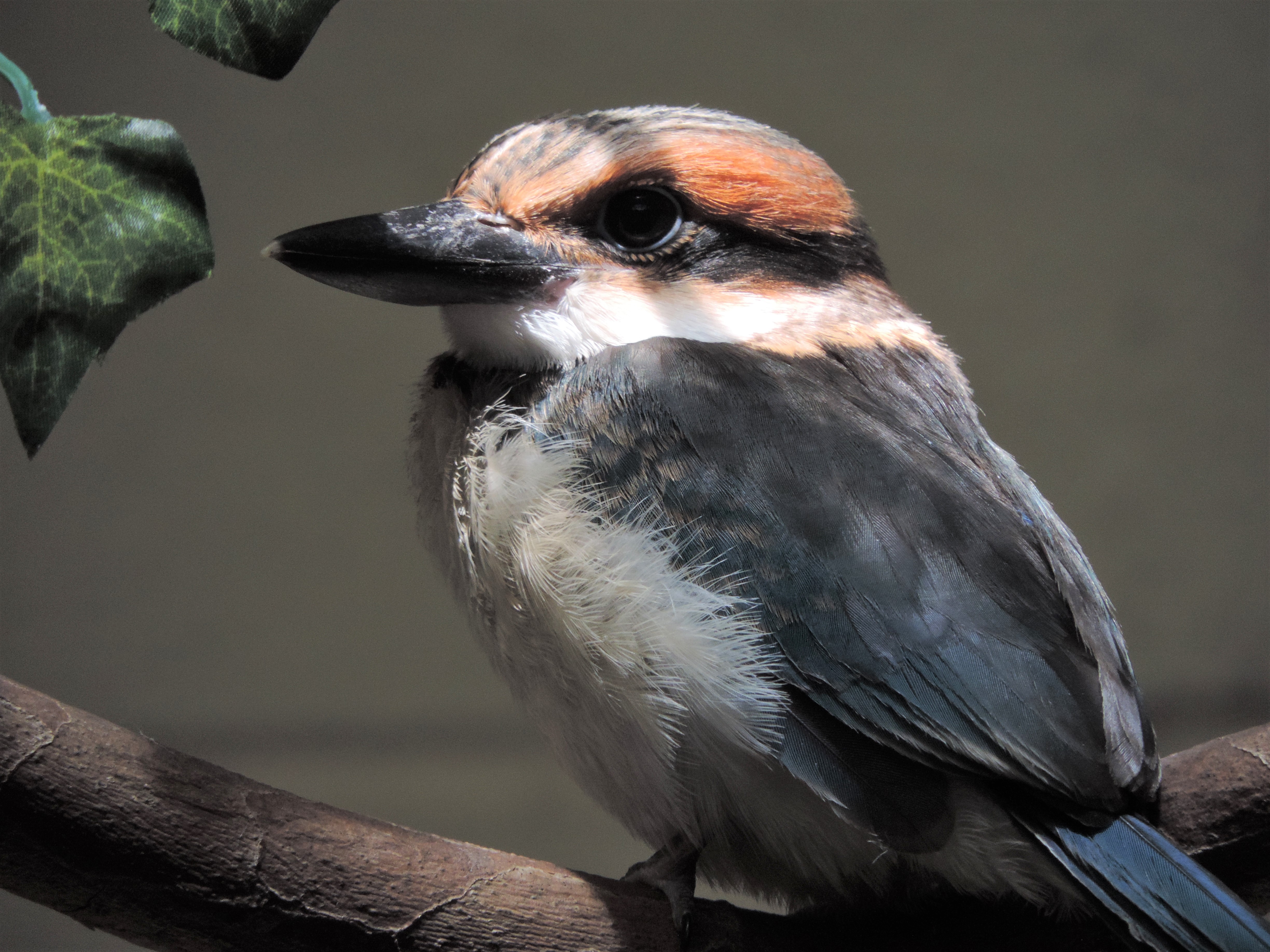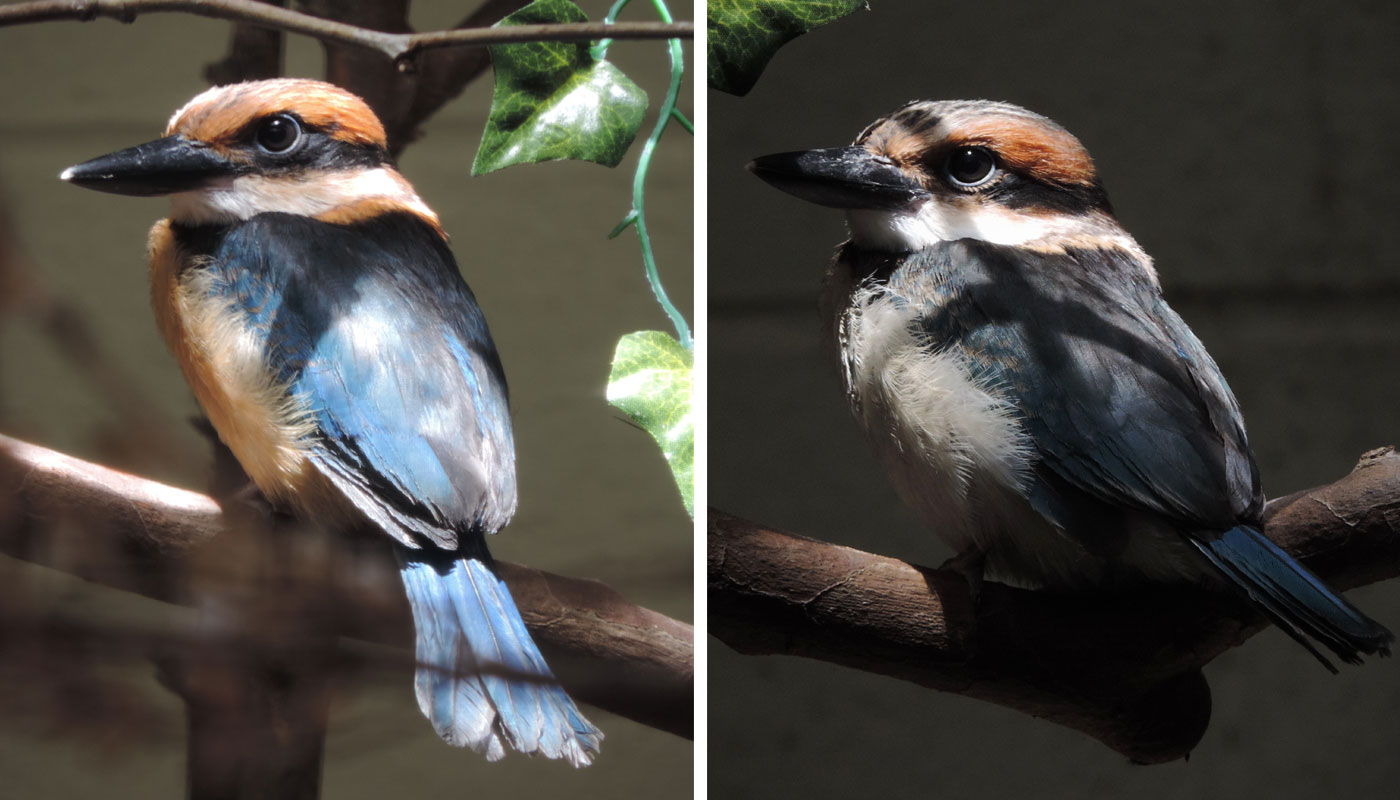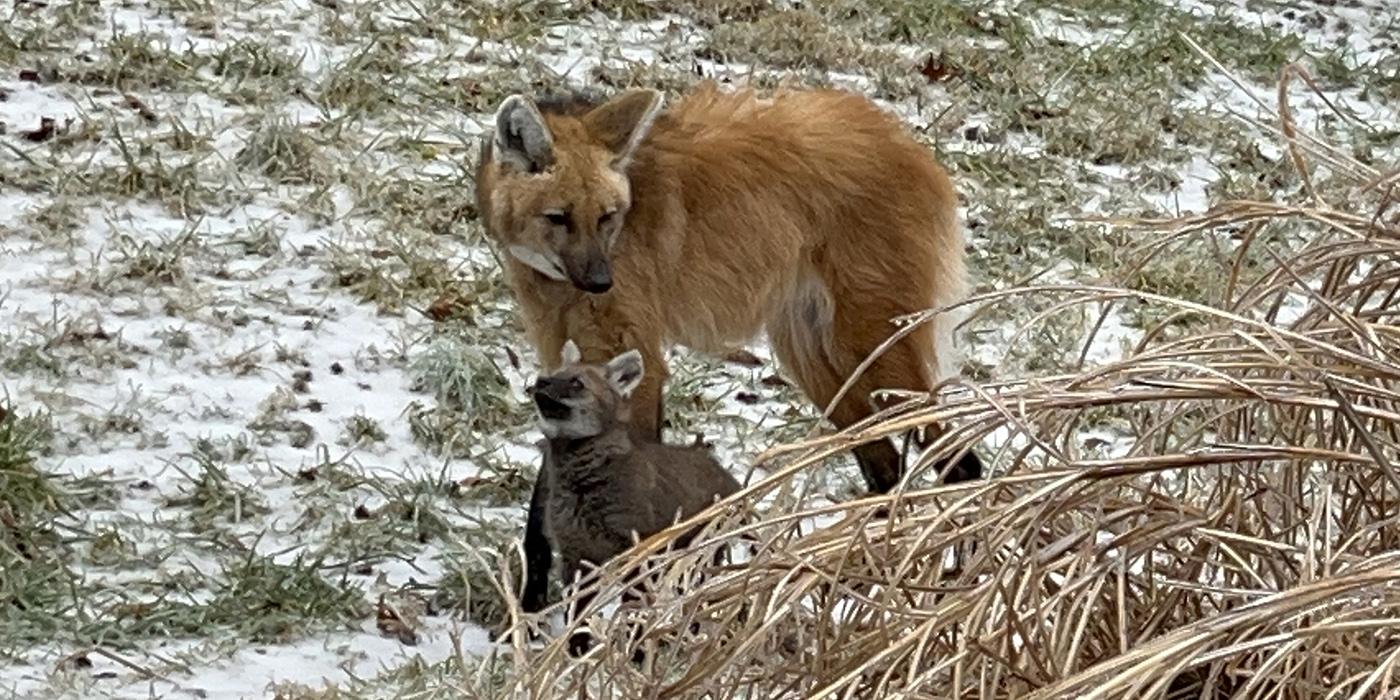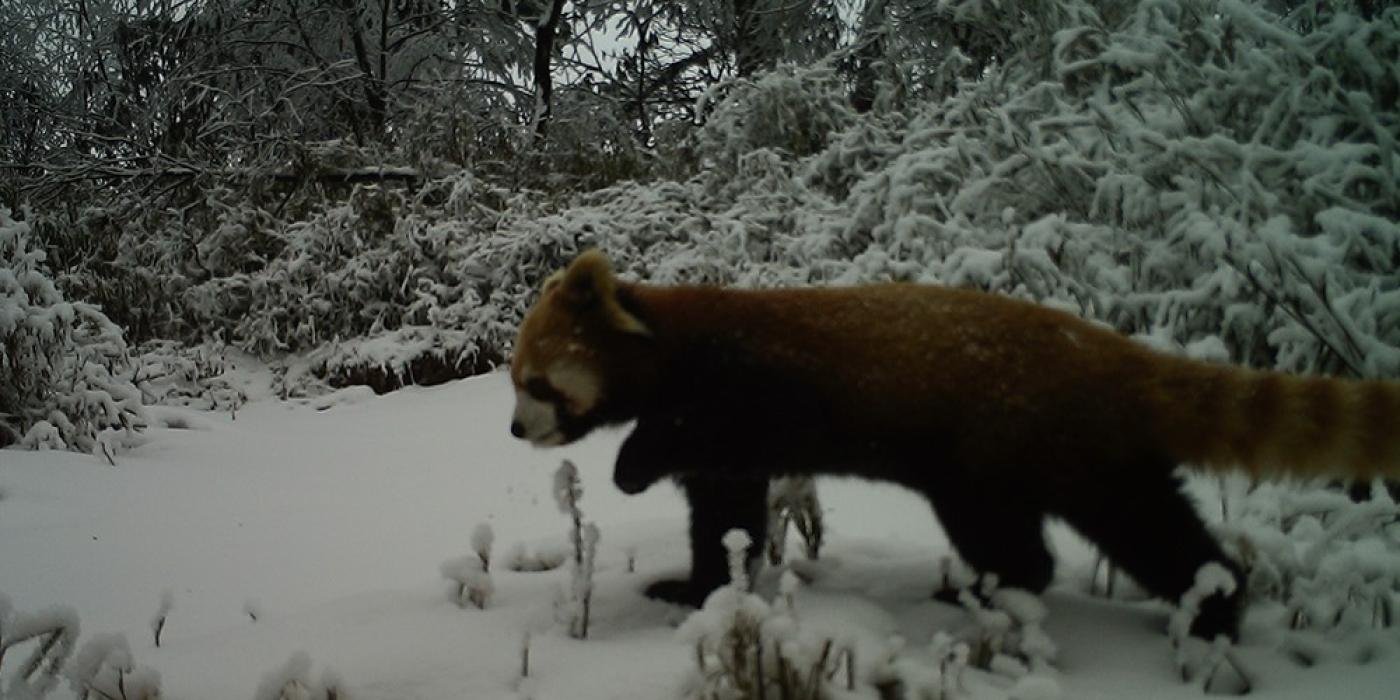Growing Up Guam Kingfisher
Our bird team has been busy this summer caring for all the feathered residents at the Smithsonian Conservation Biology Institute in Front Royal, Virginia. Breeding season is our most demanding time of year, but it can also be the most rewarding. That’s certainly true for Guam kingfishers, the rarest species we care for here at SCBI. There are fewer than 140 Guam kingfishers left in the world, all living in human care.
In my previous update, I was ecstatic to share news of two Guam kingfishers hatching. We let first-time parents Animu and Giha raise their female chick, while we hand-raised their male chick. Both chicks have since fledged, which means they have left the nest to become more independent.

Guam kingfishers can fly when they fledge but are not as coordinated as adults, so our team must take some special precautions to prepare a habitat for these clumsy offspring. We place extra branches low to the ground, so the inexperienced flyers have areas to perch. Young birds may tire quickly as they build up their flight muscles, so they need plenty of options that are easy to reach. We also offer food and water in multiple locations, which encourages independent eating.
After leaving the nest, chicks typically stay with mom and dad for a few weeks until they learn to find food on their own. However, when Animu and Giha’s female chick fledged, Giha was already incubating new eggs in another nest. Guam kingfishers were not well studied in the wild before they nearly went extinct, so we can’t be sure if this is typical behavior. For some bird species, it’s common to re-nest quickly to make the most of the breeding season.
Animu and Giha didn’t continue to care for their fledgling chick, so we removed her from their enclosure for her safety. Luckily, her hand-reared brother fledged just a few days later, at 36 days old. We housed the siblings next to each other, as they both learned how to fly, eat and explore their new habitats.
I’m also excited to announce that these two special chicks now have names! Our friends at the Guam Department of Agriculture, Division of Aquatic and Wildlife Resources hosted a public vote and gifted us two beautiful Chamoru names. Chamoru is the language of the indigenous people of the Mariana Islands. The female chick was named Lina’la’ (lee-NAT-la), which means “life,” and the male was named Gekpu (GEH-k-poo), meaning “ability to fly.”

Lina’la’ and Gekpu now have their own habitats and are doing very well. Both have been experimenting with their adult vocalizations, which are still a little raspy. In a few months’ time, they will molt into their bright orange and blue adult feathers. For now, they still look like juveniles and are as mischievous as ever. Young kingfishers are even more shy than adults when staff are close by, but our camera traps revealed their secret life when no one is watching.
Both chicks are very curious about everything in their enclosures — and are even a little bit ornery. Every leaf, branch, bowl and rock is subject to pecking, poking, throwing or bill-smacking. Our cameras also allowed us to see the two chicks interacting, including making begging vocalizations toward each other as they learned to hunt.
Due to aggression, Guam kingfisher typically can’t live together unless they are a breeding pair. Young birds, however, can sometimes be companions until they reach maturity. We made a few attempts to house Lina’la’ and Gekpu together, but it turns out that Lina’la’ is a bit of a bully. She prefers bossing her slightly younger brother around! We decided it was best to house them separately, but they can still see and hear each other.
While these babies were figuring out how to be kingfishers, their parents moved on to their next set of offspring. We’ll catch up with Animu, Giha and their newest chicks in my next update, so stay tuned!
Related Species:




